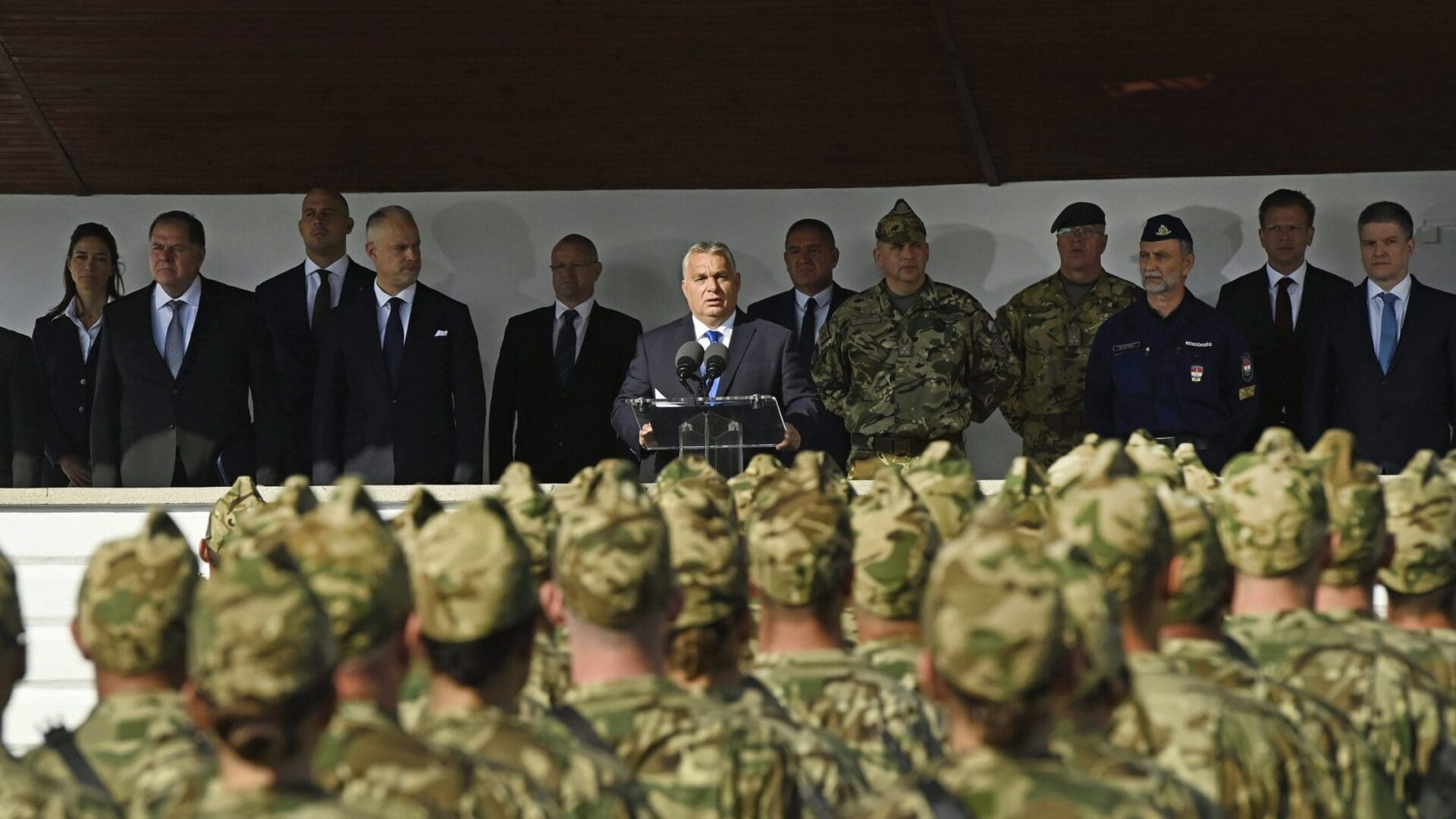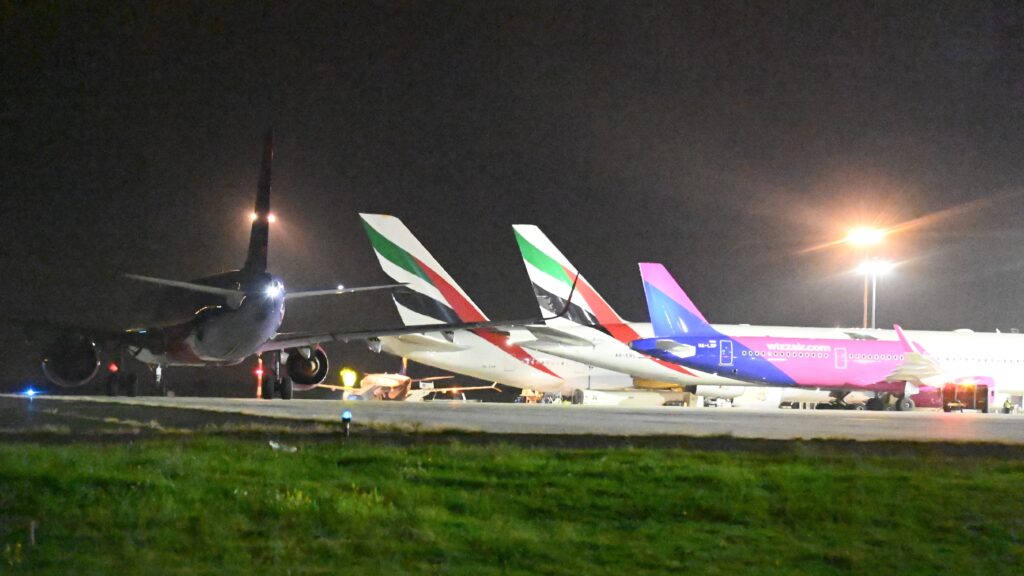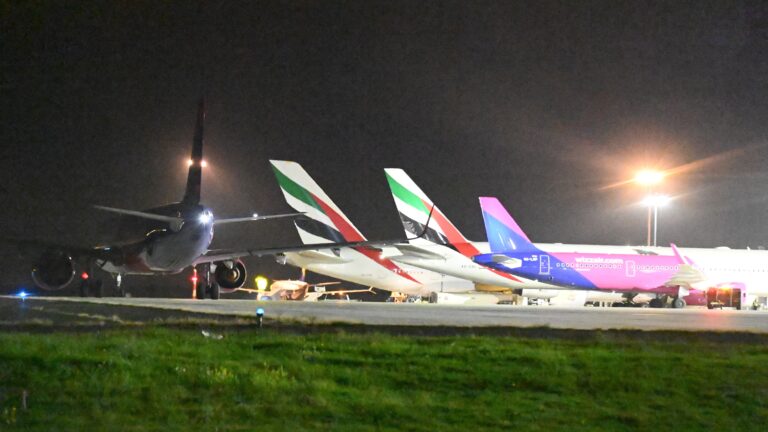‘Hungary is already among the NATO countries that spend two per cent of GDP on defence’, said Hungarian Defence Minister Kristóf Szalay-Bobrovniczky at the Infotér Space & Defence Conference in Balatonfüred. ’However, due to the security situation in our region—with the war in our neighbourhood and the pressure of illegal migration—it seems that even more than two per cent has to be spent on defence’, he continued.
Force Development from Scratch
In his speech, the defence minister gave an overview of the development of the Hungarian Defence Forces from the regime change to the present day. He recalled that by the end of the decade following NATO accession, the Hungarian defence forces (HDF) were stripped of their assets, a large portion of their equipment was decommissioned, and the HDF was declared professional. The number of troops was reduced drastically, without a reserve force in place. After 2010, the new government had to start from scratch to build a truly professional, strong and capable force, he stressed.
After decades of downsizing and neglect of the defence sector, in the mid-2010s the Hungarian government committed itself to carrying out an overall force development programme to modernise the Hungarian Defence Forces. In 2016, the Hungarian government announced the Zrínyi 2026 Defence and Force Development Programme with the promise of realising the long-awaited and well-needed modernisation and reformation of the HDF in the next ten years. The force development programme essentially aims to acquire NATO-compatible equipment, from personal equipment to combat gear, manufactured by the European and Hungarian defence industry. Although the Zrínyi 2026 programme is just halfway complete, Hungary’s defence capability has already grown significantly, which is essential not only in terms of self-defence and deterrence, but also for the country to remain an influential contributor to regional, European and transatlantic security efforts in trying times.
Digitalisation and Innovation
The minister of defence also outlined the future direction of the development of the Hungarian armed forces. He underscored that the world has changed significantly with the development of digitalised technology. He noted that the military industry has been a leader of innovation in recent decades, and its achievements such as GPS and the internet have spread to the civilian sphere. ‘Today, however, it is not only military research institutes that are developing new technology, but start-ups are also entering the military world thanks to the opportunities offered by digitalisation, the minister added.’
In this spirit, the Defence Innovation Research Institute will soon be set up as a backbone institution of the Hungarian Ministry of Defence, which will enter the innovation ecosystem from the military side. The Institute will be headed by Imre Porkoláb, who was promoted to the rank of brigadier general on 18 October.
Kristóf Szalay-Bobrovniczky listed the procurement of equipment, the creation of an assembling and manufacturing capacity of the Hungarian defence industry and the integration of digital technology into the operation of the HDF as further steps in the development of the armed forces. He also noted the importance of developing drone technology as a new area of innovation and stressed the significance of effective communication as a basis for integration work. The minister also spoke of the role of space technology, which opens up the possibility of earth observation, for example.
Boosting Salaries and National Manufacturing Capacities
A few months ago, the minister confirmed that Hungarian military development would continue despite the economic difficulties ahead. This is backed up by the fact that from September 2022, the salaries of Hungarian soldiers will be increased by approximately 25 per cent. The boosting of the social recognition of the military and the raising of military salaries are also key objectives of the Zrínyi 2026 force development programme. Of course, the attainment of these objectives can play a key role in increasing the number of troops as well.
National Manufacturing Capacities
This was also mentioned by Hungarian Prime Minister Viktor Orbán in his speech on 15 October at the swearing-in ceremony for military volunteers at the Petőfi Sándor Barracks in Budapest, where more than 250 young people took the oath of enlistment.
Orbán stressed that ‘Hungary is threatened from several sides, and that we cannot bury our heads in the sand like ostriches. In the east, guns are thundering in war, countless weapons are arriving from the west to the Ukrainian front, and from the south, hundreds of thousands of illegal migrants are besieging the borders of Hungary,’ the PM said, highlighting the importance of Hungarian force development and its continuation.
The Prime Minister went on by saying that ‘We Hungarians do not need war hawks, but an army that is combat-ready, capable of guaranteeing peace and acting as a deterrent. Those without such readiness and discipline cannot be successful. Those without might will not be proved right either. And those without faith will have nothing to fight for.” He also pointed out that there are nations that have already begun preparations, and therefore Hungary must not lag behind.
‘We owe a great deal to the Hungarian armed forces’, he continued, ‘and to Hungarian soldiers. We need soldiers who want to serve their country and modern weapons which will be effective against all the world’s threats.’ The prime minister said that in order to achieve the desired level of readiness, two important measures have been decided on. One, a modern military industry capable of producing modern weapons will be built in Hungary, and two, new recruitment campaigns will be launched in December this year.
An important goal of the Hungarian defence forces development is not just to import new technologies, but to have national manufacturing capacities. This will enable Hungary to produce complete weapon systems on its own. The transfer of this type of manufacturing capacity is well underway in several Hungarian cities.
In Gyula, parts for military helicopters are being produced, while in Kaposvár armoured vehicles and military drones are being built. In Kiskunfélegyháza small firearms, in Várpalota ammunition and mortars, while in Nyírtelek radars are being manufactured. In addition, infantry fighting vehicles are produced in Zalaegerszeg and an IT base for high-end military systems is located in Budapest.
The Prime Minister pointed out that a factory that is in the top tier of the production of supersonic military aircraft has also been purchased by the Hungarian state recently. The Prime Minister also mentioned in his speech that mortar-producer Hirtenberger Defence Systems, acquired the Hungarian government, will relocate its headquarters to Hungary in 2024. By establishing a completely new sector, the military industry will be able to provide hundreds of jobs for Hungarians, he noted.
The Lynxes Have Arrived
One of the most significant developments in the HDF’s military technology—with which HDF has regained a lost capability—is the Lynx KF41 infantry fighting vehicles, some of which were also unveiled at the event in Balatonfüred. According to the Ministry of Defence, the Hungarian Defence Forces will receive 46 of the Lynx combat vehicles produced by Rheinmetall AG by 2023, and a further 172 by 2029, which will be manufactured in Zalaegerszeg, Hungary.
The Lynx is equipped with a 30 or 35-mm machine gun, a 7.62 mm parallel-barreled machine gun, a Spike LR2 rocket launcher and a remote-controlled gun rack. The StrikeShield active protection system ensures the protection of the turret. Later on, the Lynx may even be equipped with a drone launcher, self-guidance capability and will be mounted with the Skyranger air defence system.
Rheinmetall Hungary’s production facility was inaugurated in the summer and serial production of the combat vehicles is expected to start in 2023. The plant will be able to produce 45 Lynxes per year and may later also be able to produce new types of military vehicles and civilian equipment. The production will in part make Hungary self-sufficient and will partly provide some returns on the investment through exports. Hungary is the first country in the world to put the Lynx IFV into service and the first to start serial production.
Speaking at the event, Armin Papperger, CEO of Rheinmetall AG underlined the Hungarian government’s commitment to force development and said that the newly sworn-in soldiers clearly had a sense of commitment, dedication, and readiness to defend their country, Europe and NATO. And to do this, the Hungarian Defence Forces have now been given the best protection, real state-of-the-art technology, he concluded.








